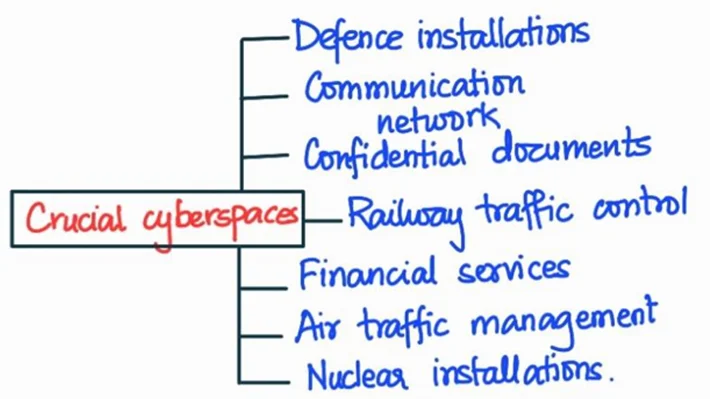Answer:
| Approach:
Introduction
- Introduce by highlighting the growing significance of cyber-attacks as a threat in the digital era.
Body
- Discuss the various threats posed by cyber-attacks.
- Identify and mention the key components of a robust security framework to counter these threats.
Conclusion
- Conclude by underscoring the increasing prominence of cyber threats as India progresses in digitalization.
|
Introduction:
In today’s digital age, cyber-attacks have emerged as a serious threat to national security, economic stability, and individual privacy in India. According to the “Cyber Threats and Trends” report published by Seqrite, India witnessed around 4.5 million cybersecurity incidents in 2022 alone. The evolving nature of these threats necessitates a robust and dynamic security framework.
Body:
Potential Threats of Cyber-attack:
- National Security: Cyber-attacks can disrupt critical infrastructure, such as power grids, communication networks, and defense systems, undermining national security. For example, the 2019 cyber breach at the Kudankulam Nuclear Power Plant underscores threats to national security.
- Economic Damage: Attacks on financial institutions or e-commerce platforms can lead to massive economic losses and shake investor confidence. For example, Cyfirma reported in 2020 that Indian companies lost over $4 billion due to cyber threats.
- Data Theft: Cyber-attacks can result in breaches of personal and sensitive data, infringing upon individual privacy and potentially leading to identity theft or fraud. For example, the 2021 data breach at Air India, affecting 4.5 million customers worldwide, illustrates the risks of data theft.
- Disruption of Public Services: Attacks on government systems can disrupt public services, causing inconvenience and potential chaos. For example, the 2020 cyberattack on the Ministry of Health disrupted crucial public services amidst the COVID-19 pandemic.

Security Framework to Prevent Cyber-attacks:
- Legislative Measures: The Information Technology Act, 2000 provides a legal framework to address cybercrimes. However, constant updates are required to keep pace with evolving cyber threats.
- Cyber Security Infrastructure: Institutions like Indian Computer Emergency Response Team (CERT-In) play a critical role in defending against cyber threats and responding to cyber security incidents.
- International Cooperation: Given the borderless nature of cyberspace, international cooperation is crucial for exchange of information and best practices, and for legal assistance in cybercrime cases.
- Public Awareness: Educating the public about safe online practices and promoting digital literacy can help reduce the risk of cyber attacks at an individual level.
Conclusion:
As India continues to digitalize, the threat of cyber-attacks will become increasingly prominent. To address this, a multifaceted approach involving legislative updates, strengthening cybersecurity infrastructure, international cooperation, and public awareness is essential to create a robust security framework.
